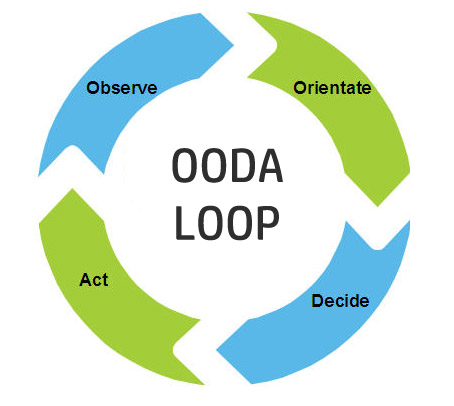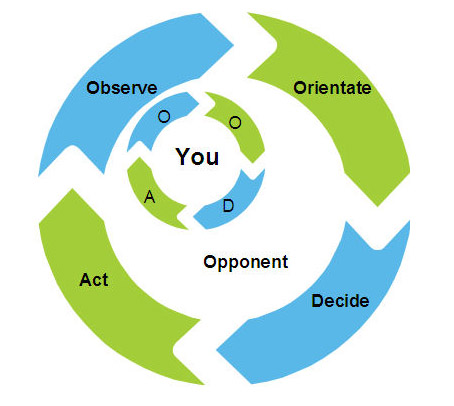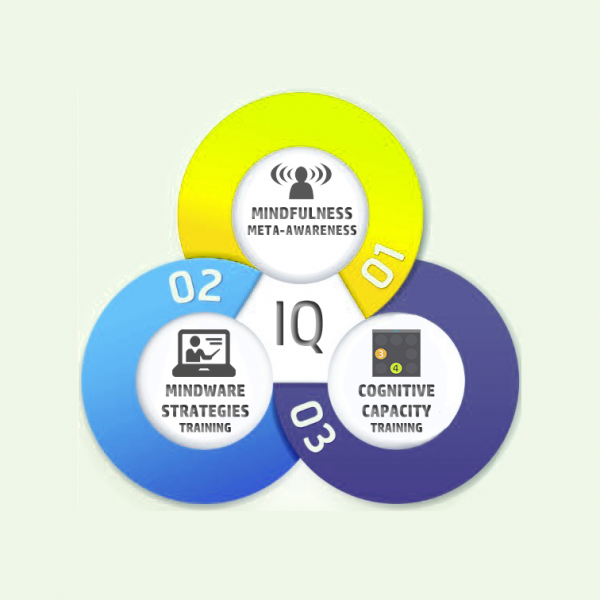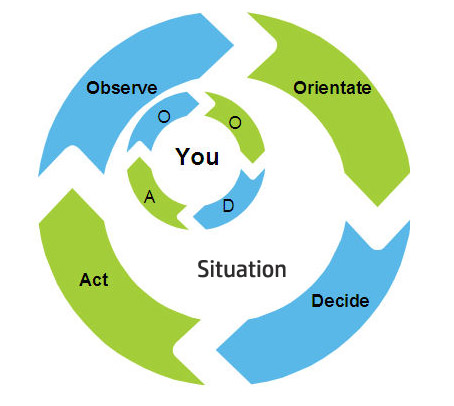Strategy: Definition & Examples
We will use the following definitions:
Strategic action promotes strategic advantage, and/or implements strategic plans.
Strategic plans are high level plans to achieve goals under conditions of uncertainty.
Strategic vision is intuitive, creative thinking about high-value envisioned futures.
IQ Mindware Strategic Action Exercises: The OODA Loop
1. Mindfulness / Meta-Awareness
Applying the OODA loop involves being meta-aware of your own OODA loop as it unfolds, as well as how it may get inside other OODA loops or other OODA loops may get inside your own!
2. Mindware Strategies
OODA loop refers to the decision cycle of observe, orient, decide, and act, developed by military strategist and United States Air Force Colonel John Boyd during his dog-fights as a fighter pilot.
The concept is that decision-making occurs in a cycle of observe-orient-decide-act. The critical component of this loop from a strategic point of view is ‘orient’. Orientation is based on culture, genetics, previous experience, ability to analyze and comprehend (IQ), and schemas or mental models/conceptualizations of reality. Orientation shapes the way we observe, the way we decide, the way we act.

According to Boyd, an entity (whether an individual, team or an organization) that can process this cycle quickly, observing and reacting to unfolding events more rapidly than an opponent can thereby “get inside” the opponent’s decision cycle and gain the advantage. Getting inside your opponent’s loop means that you complete your loop processing quicker than they do.
The key is to obscure your intentions and make them unpredictable to your opponent while you simultaneously clarify his intentions. That is, operate at a faster tempo to generate rapidly changing conditions that inhibit your opponent from adapting or reacting to those changes and that suppress or destroy his awareness. Thus, a hodgepodge of confusion and disorder occur to cause him to over- or under-react to conditions or activities that appear to be uncertain, ambiguous, or incomprehensible.
Harry Hillaker

Boyd conceived of OODA strategy in terms of opponents and zero-sum competitions – all the way from playing a game of Go some someone to engaging another nation on multiple battle fronts. You can also apply the OODA loop model to situations (seen as adaptive ‘systems’) more generally, many of which are not zero-sum. Here the objective is to read the evolving dynamics of a situation (e.g. how a market evolves, or how an organization is changing), including the way the system ‘observes’ and ‘orientates’ to circumstances before acting, in such a way that one can synchronize to it ‘in time’ with it (rather than mistiming your actions within it) and in some cases ‘outpace’ it – such as when one anticipates a change market dynamics or employment opportunities.
Exercise: Try to identify situations that could be characterized as OODA loops in your own life, and try to figure out what feeds into each of the elements of the loop. Consider what you would need to do to ‘get inside’ the situation’s OODA loop to have an advantage within it.
3. Cognitive Capacity (Gated DNB) Training
HighIQPro’s gated dual n-back training improves the brain’s executive functioning and processing speed which should help you speed up your OODA loop, filter what you attend to more efficiently, and develop more comprehensive ‘orienting’ models and strategies from which your decision-making flows.



